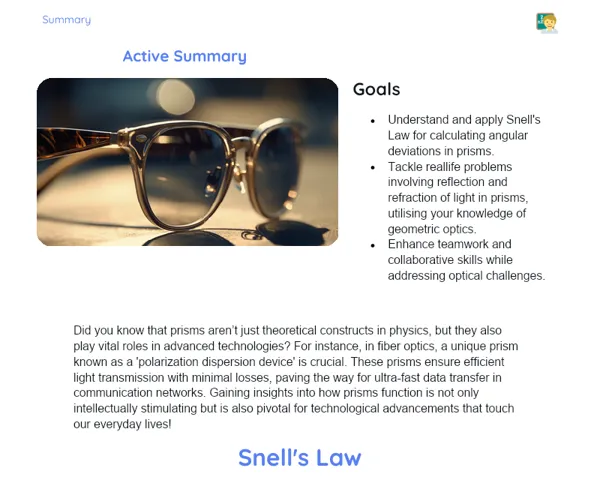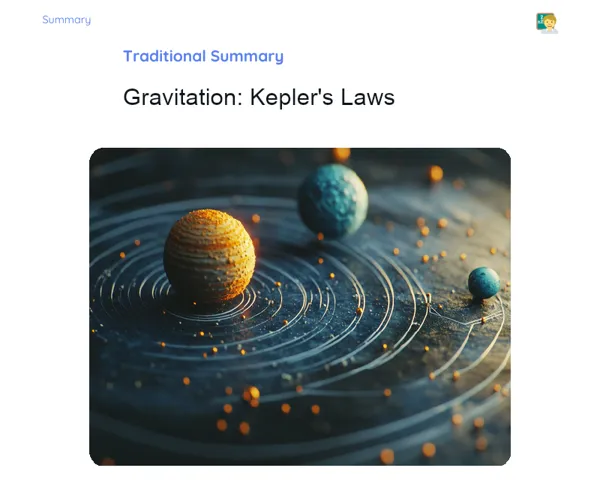Summary Tradisional | Dynamics: Elastic Force
Contextualization
Elastic force is a restoring force that comes into play when an elastic object, like a spring or a rubber band, is either stretched or compressed. The defining trait of this force is its ability to bring the object back to its original length. Grasping the concept of elastic force is vital for students of physics as it helps us understand how elastic materials respond to external forces. This principle underpins countless devices we encounter in our everyday lives, from the toys our children play with, to the suspension systems in our vehicles, and even the gear used in sports.
Formulated by Robert Hooke in the 17th century, Hooke's Law defines the linear relationship between the elastic force (F) and the displacement (x) of an elastic object. This law states that elastic force is directly proportional to the displacement, which can be captured in the formula F = kx, where 'k' stands for the elastic constant. This constant measures the stiffness of a material and differs depending on the type of material and its configuration. Being able to calculate this force and interpret graphs of force versus displacement is crucial for students and professionals dealing with practical issues and experiments in physics.
To Remember!
Definition of Elastic Force
Elastic force acts as a restoring force when an elastic object, such as a spring or rubber band, is either stretched or compressed. The main feature of this force is its ability to return the object to its original length once the external force is released. Elastic force is found in various materials and structures that can change shape but revert back to their initial form when the force is withdrawn. This behavior is essential for numerous applications we encounter regularly.
Elastic force is directly proportional to the displacement of the object. This means the more you deform the elastic object, the stronger the restoring force it exerts to return to its original position. This proportionality is outlined by Hooke's Law, which creates a linear relationship between force and displacement. On a graph of force versus displacement, this relationship will appear as a straight line that begins at the origin.
Understanding elastic force is crucial for physics and engineering. It enables predictions about how materials and structures will react when put under external forces, which is essential for designing and building everything from everyday toys to more complex vehicle suspension systems. Moreover, this force is significant in many natural phenomena as well as biological processes.
-
Elastic force acts as a restoring force when the object is stretched or compressed.
-
It tends to revert the object back to its original length.
-
The elastic force correlates with the displacement experienced by the object, as outlined by Hooke's Law.
Hooke's Law
Hooke's Law, laid out by scientist Robert Hooke in the 17th century, illustrates the direct relationship between the elastic force (F) and the displacement (x) of an elastic object. According to this principle, elastic force is proportional to displacement, as reflected in the formula F = kx, where 'k' indicates the elastic constant. This elastic constant serves as a measure of the material's stiffness, and can differ based on the type of material and its setup.
The elastic constant (k) is crucial in Hooke's Law because it determines the rigidity of the material. A high 'k' value signifies that the material is very stiff and needs a greater force to undergo deformation, while a lower value indicates a more flexible material that can be deformed with a lighter force. Identifying the elastic constant is key for analysing and designing systems involving elastic forces.
Hooke's Law is broadly applicable, spanning from the study of minor deformations in materials to the examination of large infrastructures such as bridges and buildings. In physics experiments, Hooke's Law frequently aids in determining the elastic constant of springs and other elastic materials, facilitating predictions about their performance under various loads.
-
Hooke's Law outlines the linear relationship between elastic force (F) and displacement (x) of an elastic object.
-
The formula F = kx represents this relationship, where 'k' is the elastic constant.
-
The elastic constant (k) measures the stiffness of a material and varies based on material type and setup.
Elastic Constant (k)
The elastic constant (k) serves as a measure of the stiffness of an elastic material. It is characterized as the ratio of the force applied to the material compared to the resulting displacement caused by that force. In Hooke's Law's equation, F = kx, 'k' denotes the elastic constant, 'F' represents the applied force, and 'x' signifies the displacement. A higher 'k' value indicates a stiffer material, requiring a greater force to instigate a specific deformation.
The elastic constant varies depending on the material type and configuration. For instance, springs made from different materials or varied thicknesses will exhibit different elastic constants. Rigid materials, such as metals, typically have higher elastic constants, whereas more pliable substances like rubber tend to have lower values. Assessing a material's elastic constant is vital for the design and analysis of systems that involve elastic forces.
The elastic constant also plays a vital role when interpreting force versus displacement graphs. In an F-x graph, the slope of the straight line corresponds to the elastic constant k. This relationship allows scientists and engineers to determine a material's stiffness by simply analysing its graph. Understanding the elastic constant is fundamental for both engineering and physics as it aids in predicting material behaviour under diverse loading conditions.
-
The elastic constant (k) quantifies how stiff an elastic material is.
-
It is defined as the ratio between the applied force and the resulting displacement.
-
The elastic constant varies based on the material type and configuration.
Practical Examples
We can observe the application of elastic force in various devices and situations from our daily lives. A common example is springs in mattresses. They help distribute our weight evenly and offer the necessary support for a comfortable night's sleep, impacting the mattress's durability. The elastic constant of these springs directly affects the mattress's firmness and the level of support it provides.
Another everyday application of elastic force is seen in vehicle suspension systems. Suspension springs are vital for absorbing shocks from uneven roads, providing a smoother and more stable ride. The elastic constant of these springs must be carefully designed to strike the right balance between comfort and performance, ensuring that the vehicle can traverse different terrains without compromising safety.
Toys such as bows and arrows also depend on elastic force. When you pull back the bowstring, potential elastic energy gets stored in the flex of the bow. Releasing the string transforms this energy into kinetic energy, launching the arrow precisely and swiftly. Understanding the elastic constant of the bow is essential for optimising its performance and accuracy.
In addition to these examples, elastic force plays a crucial role in many everyday tools and devices—like tweezers, staplers, and rubber bands—allowing them to function effectively and safely in our daily activities.
-
Springs in mattresses distribute weight evenly and provide necessary support.
-
Vehicle suspension systems absorb shocks and ensure a smooth ride.
-
In toys like bows and arrows, elastic force stores potential energy for launching.
Key Terms
-
Elastic Force: The restoring force that occurs when an elastic object is stretched or compressed.
-
Hooke's Law: Encapsulates the linear relationship between elastic force and displacement of an elastic object.
-
Elastic Constant (k): A measure of an elastic material's stiffness, defined by the relationship between the applied force and the resulting displacement.
-
Displacement (x): The extent to which an elastic object is stretched or compressed.
-
Force vs. Displacement Graphs: Visual representations depicting the relationship between applied force and displacement of an elastic material.
Important Conclusions
Elastic force is a restoring force that comes forth when an elastic object, like a spring or rubber band, undergoes stretching or compression. This concept is pivotal in physics and has numerous real-world applications, ranging from children's toys to vehicle suspension systems. Hooke's Law illustrates the linear relationship between elastic force and displacement using the formula F = kx, where 'k' is the elastic constant that quantifies the material's stiffness.
The elastic constant (k) is an essential parameter that changes based on the material type and configuration. Rigid materials typically exhibit high k values, while more flexible materials show lower values. Recognising the elastic constant is critical for analysing and designing systems that involve elastic forces, helping predict how materials will react throughout various loading conditions.
Everyday applications of elastic force can be found in springs within mattresses, vehicle suspension systems, and toys like bows and arrows. A strong understanding of these concepts leads to optimising device performance—ensuring their efficiency and safety. This knowledge is indispensable for both physics and engineering, not to mention its relevance in our daily lives.
Study Tips
-
Revisit the fundamental concepts: Understand the definition of elastic force, Hooke's Law, and the elastic constant. Try explaining these in your own words and provide practical examples to reinforce them.
-
Solve practice problems: Use the formula F = kx to tackle practical questions. The more you practice, the more familiar and comfortable you'll get with these concepts.
-
Delve deeper into the topic: Look up articles and watch videos that delve into elastic force in various contexts, such as engineering and biology. This will broaden your perspective on how this concept applies across different fields.


